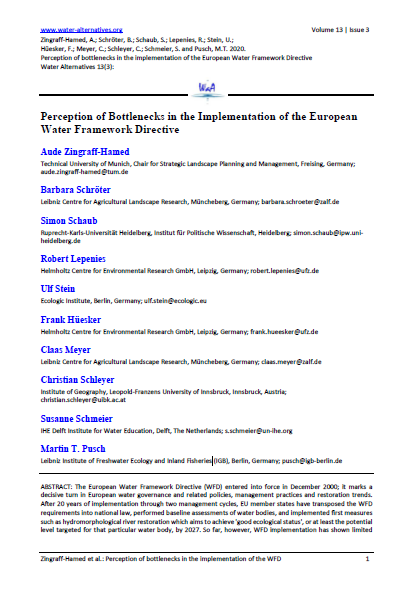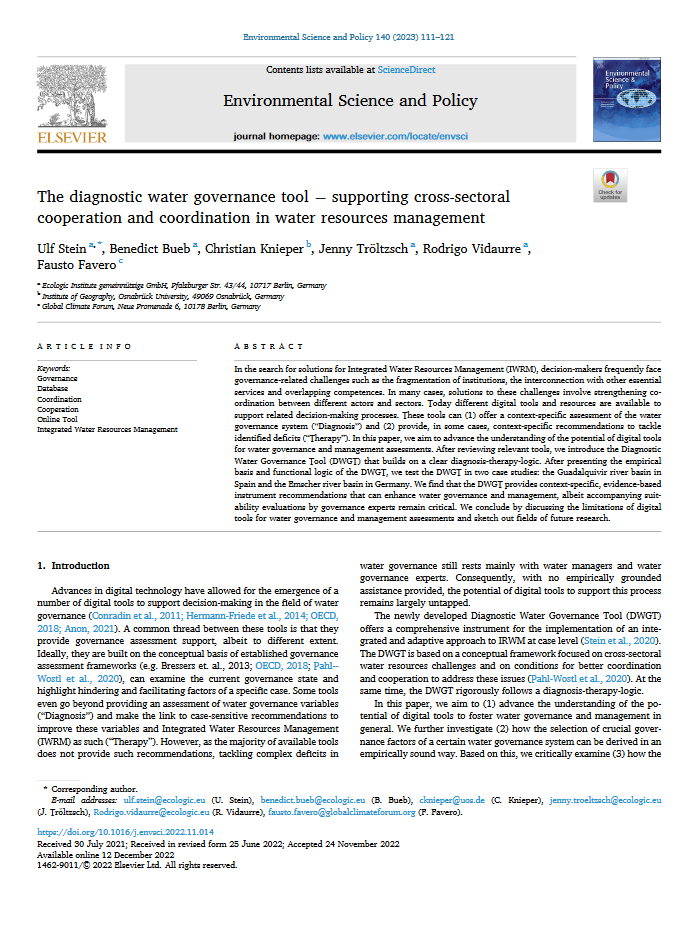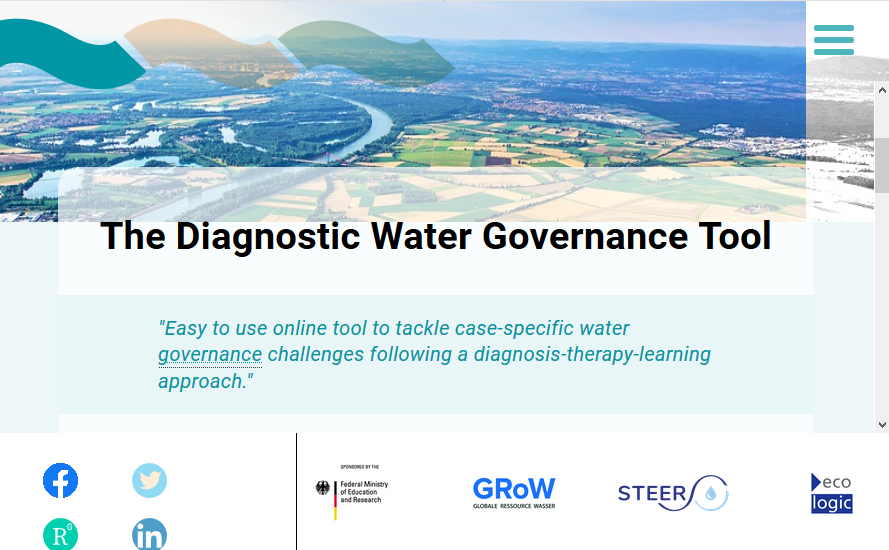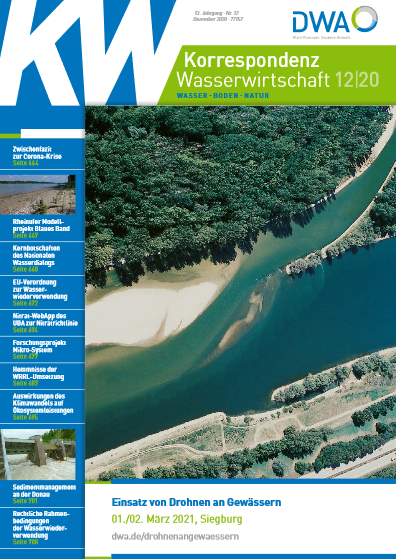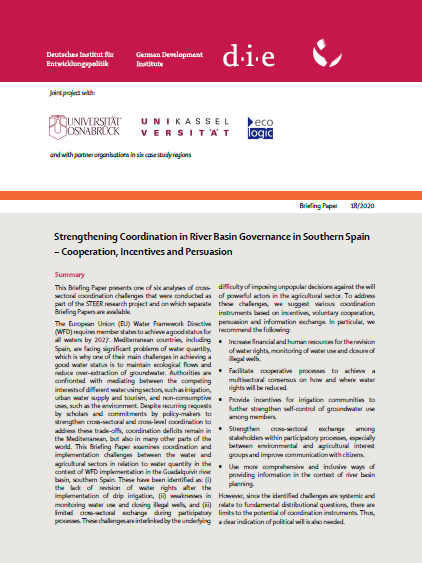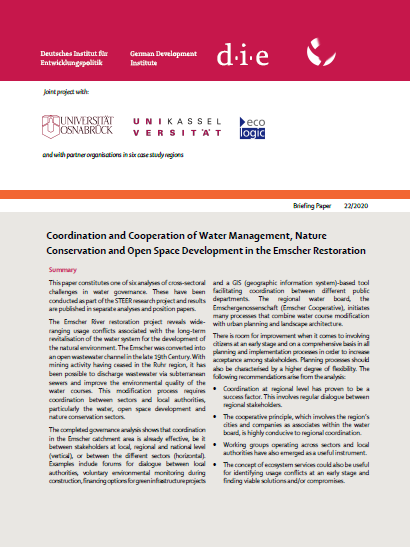Perception of Bottlenecks in the Implementation of the European Water Framework Directive
- Publication
- Citation
Zingraff-Hamed, A.; Schröter, B.; Schaub, S.; Lepenies, R.; Stein, U.; Hüesker, F.; Meyer, C.; Schleyer, C.; Schmeier, S. and Pusch, M.T. 2020. Perception of bottlenecks in the implementation of the European Water Framework DirectiveWater Alternatives 13(3).
In this paper the authors, among them Ecologic Institute's Ulf Stein, focus on the governmental bottlenecks in the Implementation of the European Water Framework Directive. The lack of horizontal, inter-sectoral communication; the insufficient land reserves; human resources and; the lack of financing were the areas that emerged as the most pressing issues. Further evidence suggests that the interaction of the WFD with other policy areas regulated at the European level might require closer inspection.
The European Water Framework Directive (WFD) aims to standardise the water policies of the European Union and to strengthen their orientation towards a more sustainable use of water. It came into force in December 2000 and aims to achieve a "good ecological status" of water bodies by 2027. However, 20 years after the WFD came into force; only limited successes have been recorded. Several studies have already dealt with the underlying causes such as technical limitations in the implementation as well as partly inappropriate monitoring procedures of the water bodies.
In order to isolate the specific governmental shortcomings, the authors collected the views of 130 scientists and practitioners in order to rank a list of 24 known barriers to the implementation of the WFD by their relevance. The lack of horizontal, inter-sectoral communication; the insufficient land reserves; human resources and; the lack of financing were the areas that emerged as the most pressing issues. The research furthermore identified the management level and a substantial lack of political will as additional elements of friction.
Further evidence suggests that the interaction of the WFD with other policy areas regulated at the European level might require closer inspection. The Habitats Directive, the Directive on the Assessment and Management of Flood Risks, the Nitrates Directive, among others, were shown to be potential sources of policy conflict with respects to the Water Framework. At the same time and conversely, respondents clearly identified the need for a closer integration of the WFD with other complementary policy areas, such as agriculture, urban planning and energy.
